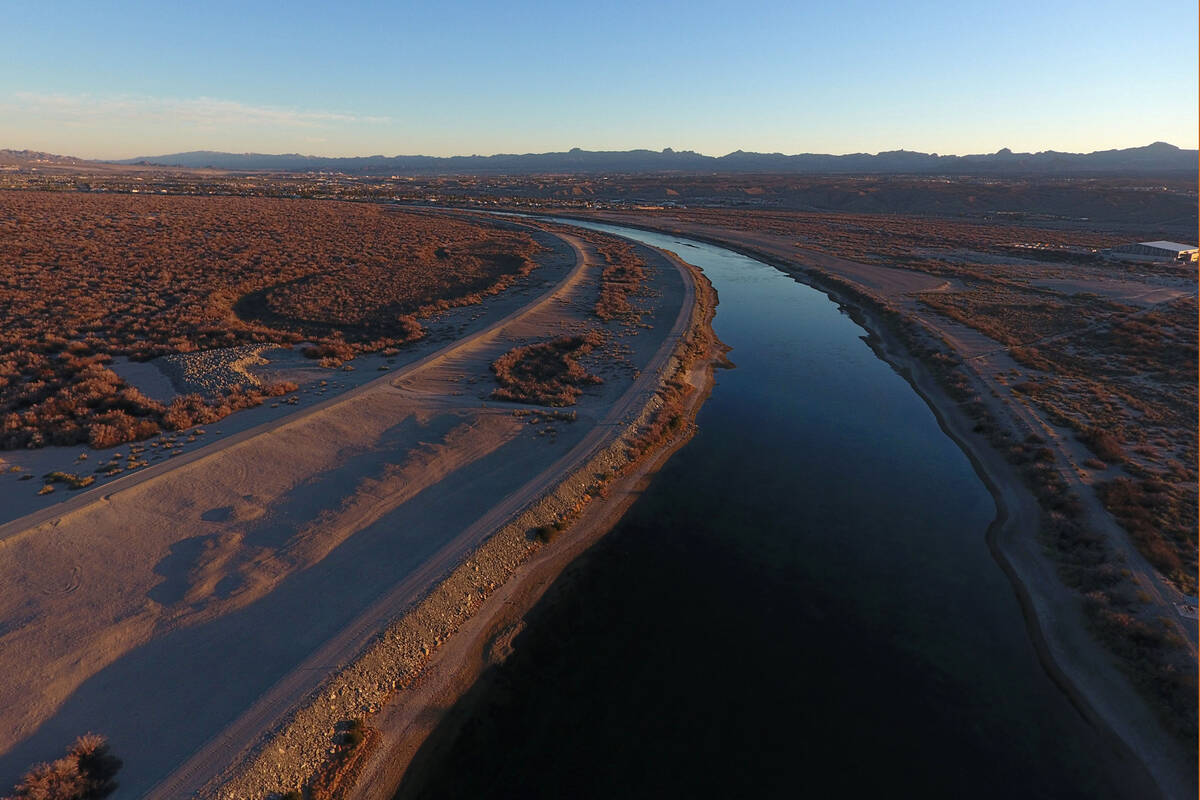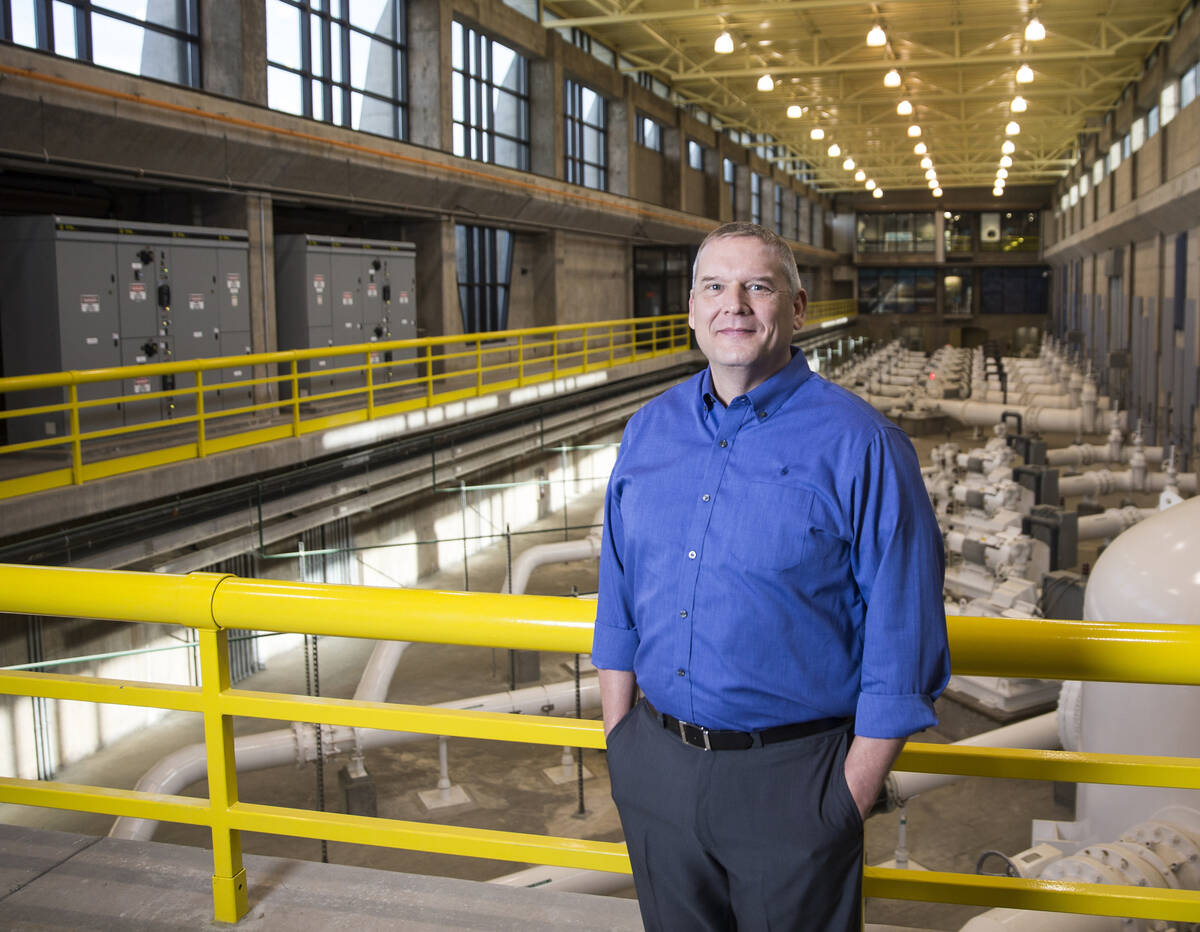Water authority looks to curb another group of water wasters — septic systems
As outlooks for water supplies on the Colorado River continue to worsen, water regulators in Southern Nevada are turning their sights to another set of water wasters.
The Southern Nevada Water Authority is looking to entice as many of the estimated 15,000 septic system users in the Las Vegas Valley to abandon their water-seeping septic tanks and hook into the municipal sewer system that recycles water back into Lake Mead that can then be reused again and again.
The initiative would aid the authority in water conservation efforts it says are needed to meet the water demands associated with the valley’s continued population growth over the next several decades, according to John Entsminger, general manager of the Southern Nevada Water Authority.
“It’s absolutely critical for our community to continue to drive down our demands in the face of climate change and diminishing flows in the Colorado River,” Entsminger told the Review-Journal on Wednesday. “If we want to make sure we have a safe and reliable water supply, we need to make sure we continue on our water conservation journey.”
Decades of drought in the Southwest and overuse of water from the river have diminished the water level of Lake Mead, which supplies roughly 90 percent of Southern Nevada’s water. That prompted the federal government to declare the first water shortage for the reservoir last year.
Fighting water waste
During a legislative Interim Committee on Natural Resources meeting Monday, Entsminger told lawmakers that septic systems are one of three main consumptive water users in Southern Nevada. Outdoor use, like turf irrigation and pools, and evaporative cooling are the other two, and the authority has undertaken recent efforts to address those two factors.
According to the authority, water meter data shows that a median-sized home on a septic system consumes about 315,000 gallons of water per year that does not go back into the reclamation system. That’s about 6½ times higher than a typically sized home built today that has no turf and is connected to the sewer system.
“Everything that hits the drain in Las Vegas makes it to the sanitary sewer system, gets treated and gets put back into Lake Mead, and we can serve other customers with it,” Entsminger said.
But when people on septic systems run their shower, wash a load of dishes or laundry or flush a toilet, “that water is gone to the rest of Southern Nevada forever,” he said.
The authority estimates that all homes and businesses on septic systems consume 15,000 to 16,000 acre-feet — or about 5 million gallons annually. Converting those properties to the sewer system would allow a little less than half of that water to be returned to Lake Mead.
For context, the water authority’s board has approved adding $750 million to invest into a water recycling project in Southern California that would allow it to receive another 25,000 to 30,000 acre-feet of Colorado River water per year.
Nevada normally receives 300,000 acre-feet of water annually from the Colorado River, although the first federal water shortage declaration made last fall cut the state’s allocation for 2022 by 21,000 acre-feet, or nearly 7 billion gallons.
The authority last year launched a septic conversion pilot program with limited funding but has not yet converted any septic systems to the municipal sewer systems. The authority is looking for a group of homes willing to convert together in order to maximize the impact with that limited funding.
Switching makes sense
Dale Devitt, a soil and water professor at UNLV and director of the Center for Urban Water Conservation, said it makes sense to convert those systems.
“All the homes on septic, that wastewater is not being captured. That’s very valuable. It’s a one-to-one exchange,” Devitt said.
But doing so needs to be economically viable, he added. Areas where you have a high density of homes on septic would be easier and more economically efficient to connect to the sewer system, Devitt said.
At Monday’s meeting, Entsminger also told lawmakers that the authority is considering size restrictions on new pools as a way of reducing the amount of water that evaporates, limiting new pool construction to no larger than 600 square feet.
Devitt said evaporation on an open body of water, such as a pool, typically is slightly higher than the water lost by watering a lawn.
“There’s a significant amount of water being lost by swimming pools, so it makes sense to address that issue as well,” he said.
Because of the average size of most backyards for most newly built homes, the water authority believes the size restriction would mostly apply to the luxury home market.
“We have seen some pretty, in my frank opinion, offensive construction in some of the luxury home markets where we’ve seen the installation of four- and five-thousand-square-foot water features in private homes,” Entsminger told the committee.
Population up; water down
Septic systems and pools are the latest targets of the water authority as it looks to boost conservation amid dwindling Colorado River flows and as Southern Nevada’s population continues to grow. A recent forecast from UNLV’s Center for Business and Economic Research showed that Clark County’s population will swell by 1 million people by 2060 to nearly 3.4 million residents.
Since 1999, the agency has offered money to homeowners who convert their lawns to desert landscaping. The program has saved billions of gallons of water by converting more than 200 million square feet of grass.
The authority successfully pushed for a new law last year that requires the removal of nearly one-third of all grass in Southern Nevada by making it illegal to use Colorado River water to irrigate “nonfunctional turf” starting in 2027.
In December, the authority also approved two resolutions that banned the installation of grass in new developments and put a moratorium on thirsty evaporative cooling systems for new buildings.
All of this is part of the authority’s plan to reduce the region’s per-capita water consumption number from 110 gallons per person per day in 2021 to 86 gallons per person per day by 2035. Achieving that would allow the authority to continue to meet the region’s projected population growth, even in scenarios in which the Colorado River’s water supplies were to drop to just 11 million acre-feet.
Growth stressing system
But growth remains a sticking point for some.
Assemblywoman Maggie Carlton, D-Las Vegas, said during the Monday meeting that “you can only conserve to a certain level. And then it would be irresponsible to build something and not be able to hook it up.”
Devitt, the UNLV professor, echoed those concerns.
“Is growth sustainable in a desert environment here in Southern Nevada? The answer is no. At some point we have to recognize that only so many people can live here. We aren’t going to be able to conserve our way out of this,” he said. “We’re asking people to conserve water, and that’s great. But if we’re not going to protect those savings, and instead allow for them to support more growth, we’re only putting ourselves in more trouble.”
Entsminger pointed to the authority’s 50-year-plan that showed multiple supply scenarios and road maps for how the region could grow while still meeting water supply demands.
That 50-year-plan will be revised and published each year going forward. So if officials start to see evidence that the river’s supplies could be even lower than the water authority’s low-end projection of 11 million acre-feet due to increasing temperatures, as some studies have suggested, Entsminger said the authority would be able to give people multiple decades of warning and time to adapt accordingly.
Contact Colton Lochhead at clochhead@reviewjournal.com. Follow @ColtonLochhead on Twitter.




















